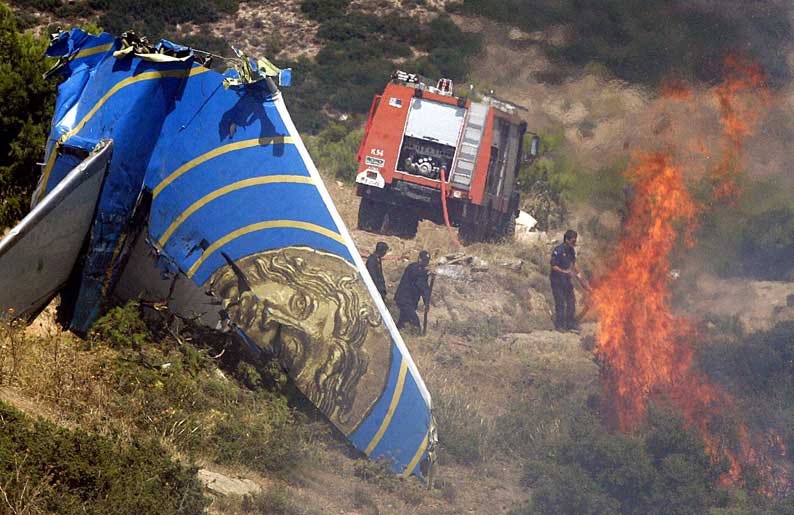Helios Flight 522

In the annals of aviation history, certain incidents stand as poignant reminders of the importance of safety, preparedness, and human error mitigation. One such event that shook the world’s confidence in air travel occurred on August 14, 2005 – the fateful day of Helios Airways Flight 522.
As the sun rose over Larnaca International Airport in Cyprus, Helios Flight 522 commenced its routine journey to Prague, Czech Republic, with a scheduled stopover in Athens, Greece. Little did anyone know that this routine flight would turn into a harrowing tragedy, claiming the lives of all 121 people on board.
The flight began uneventfully, but as it progressed, air traffic controllers noticed something alarming – the aircraft’s radio communication was unusually silent. Attempts to establish contact with the pilots went unanswered. Concerns mounted as the plane continued its course on autopilot, seemingly without human intervention.
What unfolded in the ensuing hours was a chilling sequence of events that would later be scrutinized by aviation experts worldwide. Investigations revealed a catastrophic chain of errors, both mechanical and human, that culminated in the loss of the aircraft and its occupants.
At the heart of the tragedy was a simple yet critical oversight – the failure to recognize and address a pressurization issue. Helios Flight 522 experienced a gradual loss of cabin pressure shortly after takeoff due to a misconfiguration of the aircraft’s pressurization system. Unbeknownst to the crew, this led to a gradual onset of hypoxia, a condition caused by oxygen deprivation.
As oxygen levels plummeted, the pilots and passengers succumbed to unconsciousness one by one. The aircraft, now a ghost ship in the sky, continued its journey on autopilot until it eventually ran out of fuel and crashed into a remote mountainside near Grammatiko, Greece.
In the aftermath of the Helios disaster, aviation authorities and industry stakeholders embarked on a thorough review of safety protocols, aircraft systems, and crew training standards. Lessons learned from this tragedy prompted sweeping reforms aimed at preventing similar incidents in the future.
Enhancements to cockpit alert systems, improved training on recognizing and managing hypoxia, and revised procedures for addressing abnormal aircraft conditions were among the key measures implemented in the wake of Helios Flight 522. Additionally, regulatory bodies worldwide intensified their oversight of airline operations to ensure compliance with safety regulations and protocols.
While the loss of Helios Flight 522 remains a somber chapter in aviation history, it serves as a stark reminder of the ever-present risks inherent in air travel. However, it also underscores the resilience of the aviation industry and its unwavering commitment to enhancing safety standards through continuous improvement and rigorous adherence to best practices.
Conclusion
As passengers, aviation professionals, and regulators alike, we honor the memory of those who perished in the tragedy by remaining steadfast in our pursuit of a safer, more secure future for air transportation. The legacy of Helios Flight 522 reminds us that in the face of adversity, we must unite our efforts to mitigate risks, prevent accidents, and uphold the highest standards of safety in the skies.
